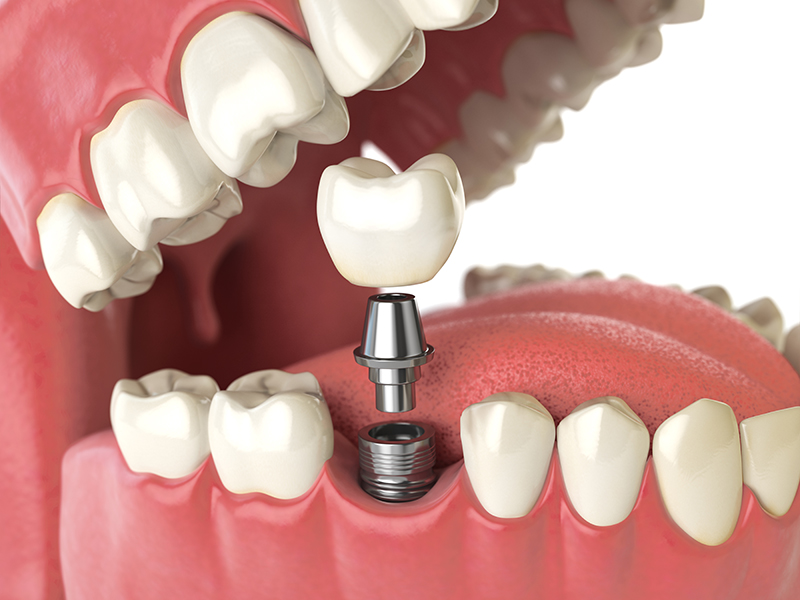Perhaps the earliest example of dental implants were seashells found in the jaw of an ancient Mayan skeleton from 1,300 years ago. While the Mayans were known for their surprisingly advanced dental knowledge, their seashell solution is a long way from today’s modern dental implants. And like many amazing, world-changing inventions, dental implants discovered practically by mistake.
It all started in Sweden in 1952. An orthopedic surgeon named Dr. Per-Ingvar Branemark conducted an experiment studying bone healing and blood flow that involved placing titanium rods in the legs of rabbits. At the end of his months-long experiment, he went to remove the rods from the rabbits’ legs and discovered they were totally fixed in place. The bone had fused to the titanium and grown around it.
This was remarkable because the human body (and the rabbit body for that matter) usually doesn’t like foreign objects being placed inside it. The body views the object as a threat and rejects it. Just think about how irritated and painful your skin becomes when you get a splinter.
Following his discovery, Dr. Branemark coined the term “osseointegration” to describe the process of bone adhering to metal. (“Osseo” comes from the Latin word for bone.) Using titanium as anchors for replacement teeth was on of the first applications that Dr. Branemark thought of for his discovery. He placed the first implants in a dental patient in the mid-1960s, however, it wasn’t until the 1980s that the use of titanium implants became accepted by the rest of the medical and dental community.
Since then, the technology has continued to advance as scientists and dentists strive create better versions of dental implants. Improvements have been made to the materials, shapes and installation techniques of dental implants, leading to shorter healing times and making the procedure available to a wider range of patients.
The difference between traditional techniques of tooth replacement and dental implants is like the difference between a peg leg and a high-tech bionic prosthetic leg. The development of dental implants allowed dentists, for the first time, to truly replace a tooth. Because implants have a root and a crown structure just like a real tooth, they function just like a real tooth and can last for decades, unlike bridges and dentures which often need to be adjusted and replaced.
While many patients have only heard of the dental implants procedure within the last few years, the truth is that the concept of dental implants has been around for centuries, and modern dental implants have been around for over 60 years. The success of implants in restoring missing teeth to patients’ mouths truly makes it feel like we’re in a golden age of dentistry. Dentists the world over are grateful to have this amazing technology at their disposal to restore patients’ smiles.
Blog
How Dental Implants Were Invented

Recent Blog Posts
Dental Bonding vs Veneers - What's The Difference?
July 17, 2023
How Your Oral Health Impacts Your Overall Health
May 24, 2023
Straighten Your Smile - SureSmile
April 25, 2023
How Pregnancy Can Affect Your Oral Health
April 28, 2019
You Might Be Brushing Your Teeth Wrong
April 21, 2019
Porcelain Veneers Can Give You a Hollywood Smile
April 14, 2019
If You Have Insurance, Your Cleanings Are Free!
April 6, 2019
Know Your Dental Specialties: Prosthodontist
March 29, 2019
What Makes a Kids' Dentist Different?
March 21, 2019